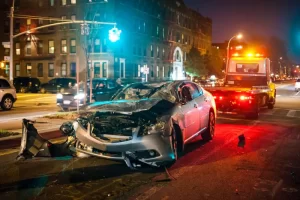Speeding is a dangerous habit that can lead to accidents and serious injuries. But what happens when you cause an accident while speeding? Can you rely on your insurance to cover the damages? In this post, we’ll take a look at what kinds of coverage are available for drivers who speed and explore the implications of causing an accident while speeding.
Table of Contents
1. What are the consequences of speeding accidents and what kind of damages can they cause
Speeding is a major issue on our roadways and can have devastating effects. Not only does it increase the likelihood of an accident, but it also causes greater damage in the event of a crash. Along with property damage and injuries, reckless speeding can lead to fatalities. In fact, excessive speed is a factor in approximately one-third of all traffic fatalities. This kind of irresponsible behavior not only puts the driver at risk, but innocent victims as well. The effects of speeding accidents can leave lasting emotional scars for family and friends of those affected, as well as financial consequences for anyone involved. It’s important to adhere to the posted speed limit and drive safely to protect yourself and others on the road. The potential consequences are simply not worth the few minutes gained by speeding.
2. How do you know if your insurance policy covers damages from speeding accidents
The first step in determining if your insurance policy covers damage caused by speeding accidents is to carefully review the terms and conditions of your policy. It is important to remember that not all insurance policies are created equal, and some may specifically exclude coverage for accidents related to reckless or illegal behavior. In addition, even if your policy does not explicitly state coverage for speeding accidents, it may offer coverage under a general category such as “accidental damage.” It is also important to consider any additional riders or coverage options you may have added on to your policy. If you have any questions or are unsure about the details of your insurance coverage, it is best to contact your insurance provider directly. They will be able to provide specific information about what is covered under your policy and any potential limitations. Taking the time to understand the details of your insurance coverage can save you valuable time and money in the event of an accident.
3. What should you do if you’re in an accident caused by speeding
Being involved in a car accident is never a pleasant experience, but it can be made even worse if the crash was caused by speeding. If you find yourself in this situation, the first thing to do is to assess any injuries and call for medical attention if necessary. Then, contact the police and exchange insurance information with the other driver(s). It’s important to not admit fault or apologize at this point, as these statements could be used against you in court. If there are witnesses, make sure to get their contact info as well. In some cases, an attorney may need to be consulted. No matter what happened leading up to the accident, it’s crucial to remain calm and handle the situation responsibly. Taking these steps can go a long way towards protecting yourself legally and emotionally in the aftermath of a speeding-related crash.
4. How to prevent speed-related accidents from happening in the first place
Speed-related accidents have a devastating impact on individuals, families, and communities. So how can we prevent them from happening in the first place? One solution is to enforce stricter speed limits and consequences for breaking those limits. Speed cameras and increased police presence on highways can act as deterrents for reckless drivers. Public education campaigns can also make people more aware of the dangers of speeding and the importance of following posted speed limits. Another solution is to improve road infrastructure by adding safety features such as guardrails, rumble strips, and roundabouts. These measures may require investment, but they can save countless lives in the long run. All in all, reducing speed-related accidents begins with a combination of stricter laws, public awareness, and improved road design. It’s a responsibility that we all share – together, let’s take steps to make our roads safer for everyone.
5. Tips for driving safely and avoiding costly mistakes
Safe driving is not just about following traffic laws and using common sense – it’s also about being prepared and avoiding mistakes that could result in costly consequences. Here are a few tips to help keep you safe on the road. First, make sure your vehicle is properly maintained, with regular oil changes, tire checks, and proper functioning of headlights and brakes. Second, plan ahead for your route and allow enough time for unexpected delays. This will help minimize the temptation to speed or engage in risky behavior. Finally, try to avoid distractions while driving – turn off cell phones or designate a passenger to handle calls and text messages, keep enough distance from other vehicles to have time to react, and avoid eating or applying makeup while behind the wheel. Safe driving requires focus and attention – following these tips can help you stay safe and avoid costly mistakes.
Conclusion
Speeding is a dangerous habit that can cause accidents with devastating consequences. If you’re involved in an accident caused by speeding, it’s important to know if your insurance policy covers the damages. You should also take steps to prevent speed-related accidents from happening in the first place. By following these tips for driving safely, you can avoid making costly mistakes.
